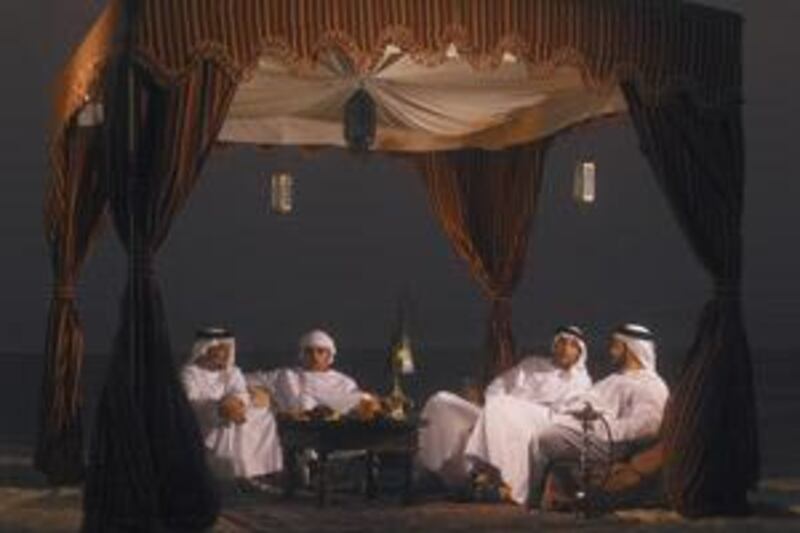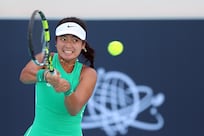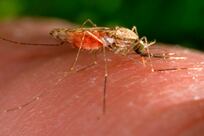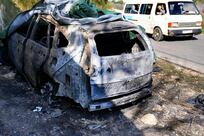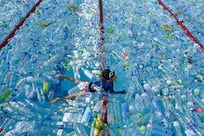Sometimes, when I'm asked to describe Emirati food, I find myself at a standstill. If a national cuisine is ultimately defined by what people eat, then our culture, with its countless international influences both historically and today, may be experiencing a slight identity crisis.
Despite the fact that Emirati cuisine is thousands of years old, many people, including locals, have no idea exactly what defines it, where certain traditional dishes and ingredients originated, how to recreate them, or what local produce is being sold in our vegetable souqs and fish markets. Many classic Emirati dishes are variations of fare from parts of East Africa, India, East Asia and the eastern Mediterranean, with a few indispensable British pantry staples. So much of our food has been hybridised and handed over for interpretation that biryani has earned the reputation of honorary national dish and Rainbow evaporated milk has a stature in larders that may rival the place in society that battle scars had in bygone days.
As children, regardless of which cousins we were visiting, we were invariably given the same afternoon snack, which we loved: soft white buns smeared with white processed cheese spread and glasses of tooth-achingly sweet Lipton tea lightened with Rainbow evaporated milk. Local food is rarely found in restaurants, and although there are several reasons for this, the outlook is not entirely bleak. For starters, there is a repetitiveness to the Emirati culinary lexicon that could challenge the idealism of the staunchest locavore and a robustness to our food that I prefer to avoid during the warmer months.
But a first generation, albeit tiny, of Emirati chefs has begun exploring ways of reintroducing local foods to our diets in ways that have been modified to suit more contemporary palates. Without further ado, here's the short order on the traditional Emirati kitchen. Aseedah is a dessert made from local pumpkins, sugar and saffron. Aysh simply means "life", and is a word used throughout the Arab world to refer to the primary starch consumed locally. In the Emirates, aysh is rice and that rice is usually white basmati.
Balaleet: the main ingredient in this million-calorie breakfast stalwart is rice vermicelli, one of the many imports that were assimilated into the Emirati culinary lexicon long enough ago to have become familiar mainstays. Balaleet is not for the faint of heart; the cooked vermicelli is mixed with sugar syrup, saffron, rosewater and sautéed onions, then topped with a fried egg. Bathitha is an archaic cardamom-spiced sweet made from date paste, wheat flour and ghee (clarified butter). Because it is non-perishable, it was a favourite dish of pearl divers during the greater part of the last century.
Chabab is a sweet pancake and can be topped with just about anything. Chami is cottage-like curd cheese. Chassif are sun-dried fish. Bedh, a small speckled white fish, is the most common of these. Yobel has much darker flesh and is typically made from stingray or shark. Faq'aa are desert truffles, but more like pungent potatoes than those from the Périgord. Prized as a delicacy, they are usually stewed in something spicy that disguises their flavour and obliterates any of the subtle truffle-like nuances for which the tubers are celebrated.
Fareed (or thareed) is the Emirati version of Tuscan pappa al pomodoro, or dry Majorcan soup bread. Moist, saturated r'qaq bread (see below) soaked with a mutton-flavoured broth is the foundation of the dish. Stewed mutton and vegetables are usually piled atop the bread. Halwa is a ubiquitous gelatinous dessert of Omani origin made with flour, saffron and blanched almonds. It is especially practical because it can be safely kept at room temperature, making it a convenient tabletop fixture to serve to surprise visitors.
Harees can be considered the national dish of the UAE. Ground wheat and goat or mutton are cooked together over a low heat until creamy. At its best it is like a savoury porridge, but it can be tedious to chew and leaden in the gut. Bad harees is gluey and has the consistency of paste. Often, harees is "beaten" with a piece of wood called a midrib. Harees is also found in various incarnations from North Africa to Armenia (where harissa porridge, not to be confused with the North African chilli sauce of the same name, is the national dish) and even as far as Kerala, where Arabs began trading during the seventh century. Harees is a very popular dish among the Muslim population of the Malabar region.
Jarad are locusts, eaten less frequently now due to health concerns over pesticide sprays. Jareesh is bulghur wheat, occasionally served plain as a starchy side dish. Jareesh is also a common dish in other parts of the Gulf and can be prepared similarly to harees. However, it is usually coarser, lumpier and less creamy, and often has spices added to it, whereas harees tends to be quite bland. Jisheed is shark meat that has been boiled, minced and then sautéed with onion and spices.
Khabeesah: Another flour-based dessert, khabeesah is heated in a pan over a flame until it browns and then reduced with a mixture of rosewater, ghee, sugar and cardamom. Khanfaroush is a fragrant fried yeast cake prepared from either dried ground rice or flour, as well as cardamom, saffron, rosewater, eggs and sugar. After the batter rises, it is divided into portions and fried in ghee. Khameer is a yeasted flatbread filled with sugar and date paste, then baked over burning coals.
Luqaimat are known as loukoumades in Greece and lokma in Turkey, from the Arabic word "luqma", meaning "mouthfuls". These are the local version of doughnut holes: ethereally crisp beignets that are doused with amber honey. Machbous, a sort of Emirati osso buco, is another contender for the national dish. Meat is cooked with onions and a spice mix distinctive to the Arabian Peninsula called biz'har, which contains loomi (dried lime) and spices such as cardamom, turmeric, clove and nutmeg. When the meat is tender, it is removed and reserved, and rice is added to the remaining stock, giving each grain a slick coating of animal fat. Eventually the meat is added back to the pot with the rice and covered, then heaped with hot coals to complete the cooking process. The dish is garnished with nuts, raisins and onions fried until crispy and sweet.
Madhroobah: Named after the Arabic word for "beaten", this is a dish of salt-cured fish (known locally as maleh) or chicken into which raw bread dough is added until thick. Mahshi is a whole slow-cooked goat or sheep, ideally prepared over a low heat until the meat is tender and falling off the bone, then served on a large tray of spiced rice and garnished with nuts, raisins and fried onions. Maleh are salt-cured fish.
Muhalla' is like r'qaq (see below for description), but with butter and eggs spread on the bread while it bakes, making for a greasy but nourishing carbfest. A dusting of sugar on top is discretionary. Muhammar bil dibs is a sweet, brown rice often found on Emirati tables. The word "dibs" simply means molasses, and "muhammar" means reddened. Muhammar bil dibs is rice that has been reddened (and sweetened, of course) with date molasses. It pairs well with fish.
Qurs al mafrook is a Bedouin-style of bread. The dough is mixed with ghee and baked underground in a clay pot. R'qaq is a fragile unleavened bread that is made on a hot iron plate. It is toasty brown in colour and crackles like burnt paper. Salona is an everyday stew made by simmering meat or fish with onions in a thin broth flavoured with tamarind or tomato paste, to which a variety of vegetables, such as potatoes, carrots, eggplants and squash, is added.
Sago is a starchy dessert not unlike tapioca and was probably brought to the Emirates from either Malaysia or Indonesia. Sahnah are ground, dried fish. Ursiyah: Like its Asian counterpart congee, this soupy rice porridge usually contains chicken and is as easily digested by nursery schoolchildren as it is by the toothless or ailing.
